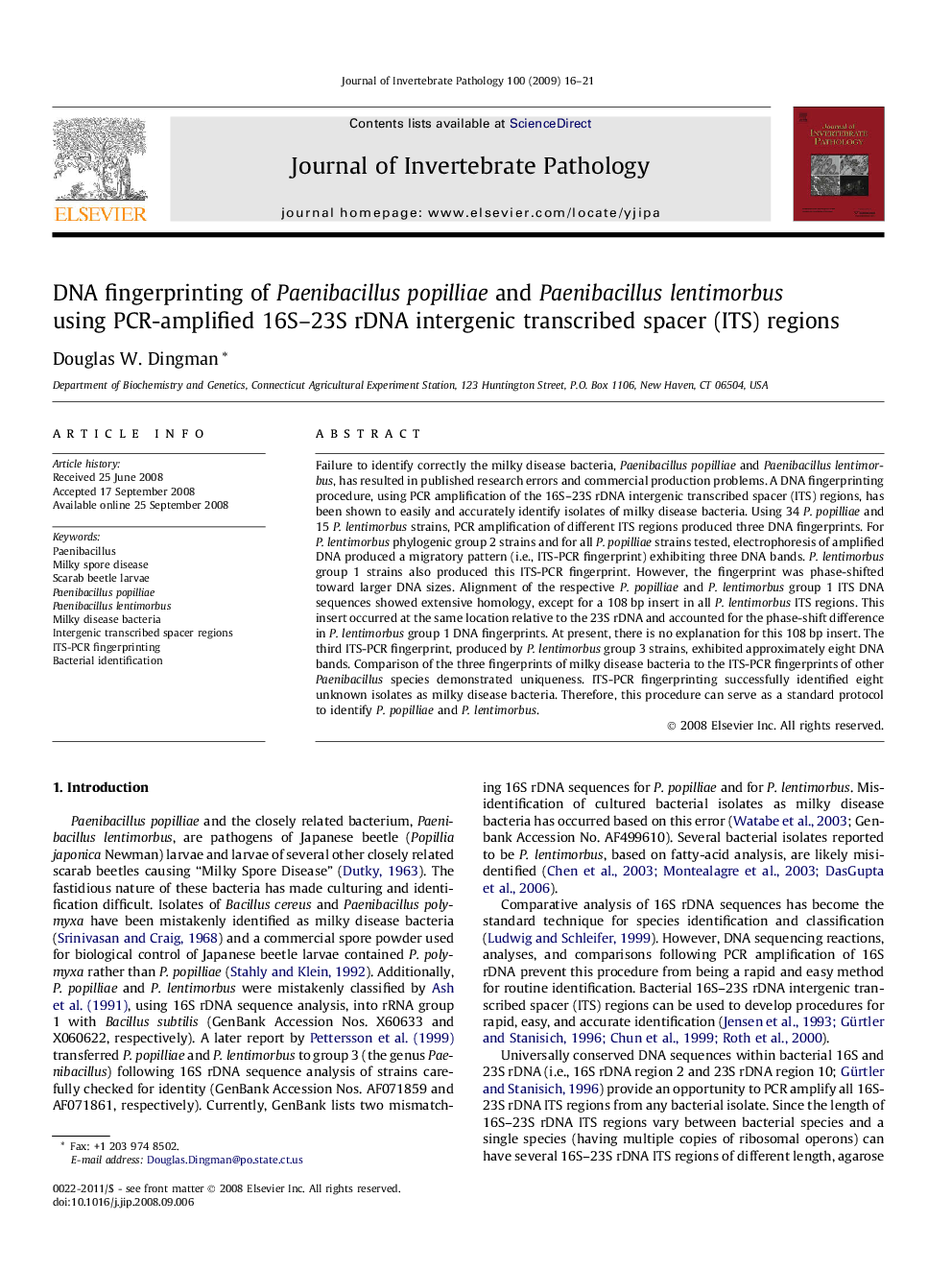| Article ID | Journal | Published Year | Pages | File Type |
|---|---|---|---|---|
| 4558473 | Journal of Invertebrate Pathology | 2009 | 6 Pages |
Failure to identify correctly the milky disease bacteria, Paenibacillus popilliae and Paenibacillus lentimorbus, has resulted in published research errors and commercial production problems. A DNA fingerprinting procedure, using PCR amplification of the 16S–23S rDNA intergenic transcribed spacer (ITS) regions, has been shown to easily and accurately identify isolates of milky disease bacteria. Using 34 P. popilliae and 15 P. lentimorbus strains, PCR amplification of different ITS regions produced three DNA fingerprints. For P. lentimorbus phylogenic group 2 strains and for all P. popilliae strains tested, electrophoresis of amplified DNA produced a migratory pattern (i.e., ITS-PCR fingerprint) exhibiting three DNA bands. P. lentimorbus group 1 strains also produced this ITS-PCR fingerprint. However, the fingerprint was phase-shifted toward larger DNA sizes. Alignment of the respective P. popilliae and P. lentimorbus group 1 ITS DNA sequences showed extensive homology, except for a 108 bp insert in all P. lentimorbus ITS regions. This insert occurred at the same location relative to the 23S rDNA and accounted for the phase-shift difference in P. lentimorbus group 1 DNA fingerprints. At present, there is no explanation for this 108 bp insert. The third ITS-PCR fingerprint, produced by P. lentimorbus group 3 strains, exhibited approximately eight DNA bands. Comparison of the three fingerprints of milky disease bacteria to the ITS-PCR fingerprints of other Paenibacillus species demonstrated uniqueness. ITS-PCR fingerprinting successfully identified eight unknown isolates as milky disease bacteria. Therefore, this procedure can serve as a standard protocol to identify P. popilliae and P. lentimorbus.
